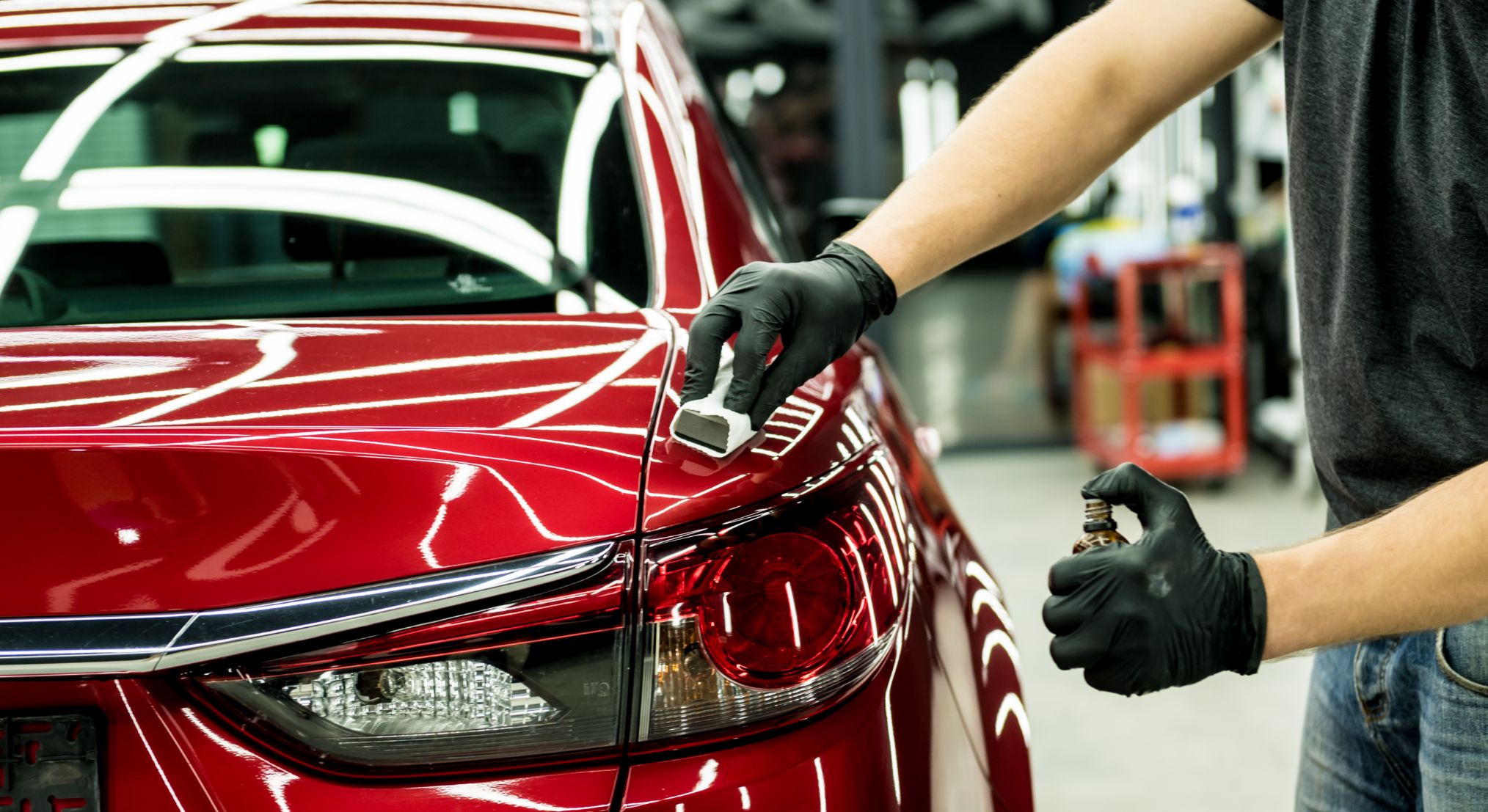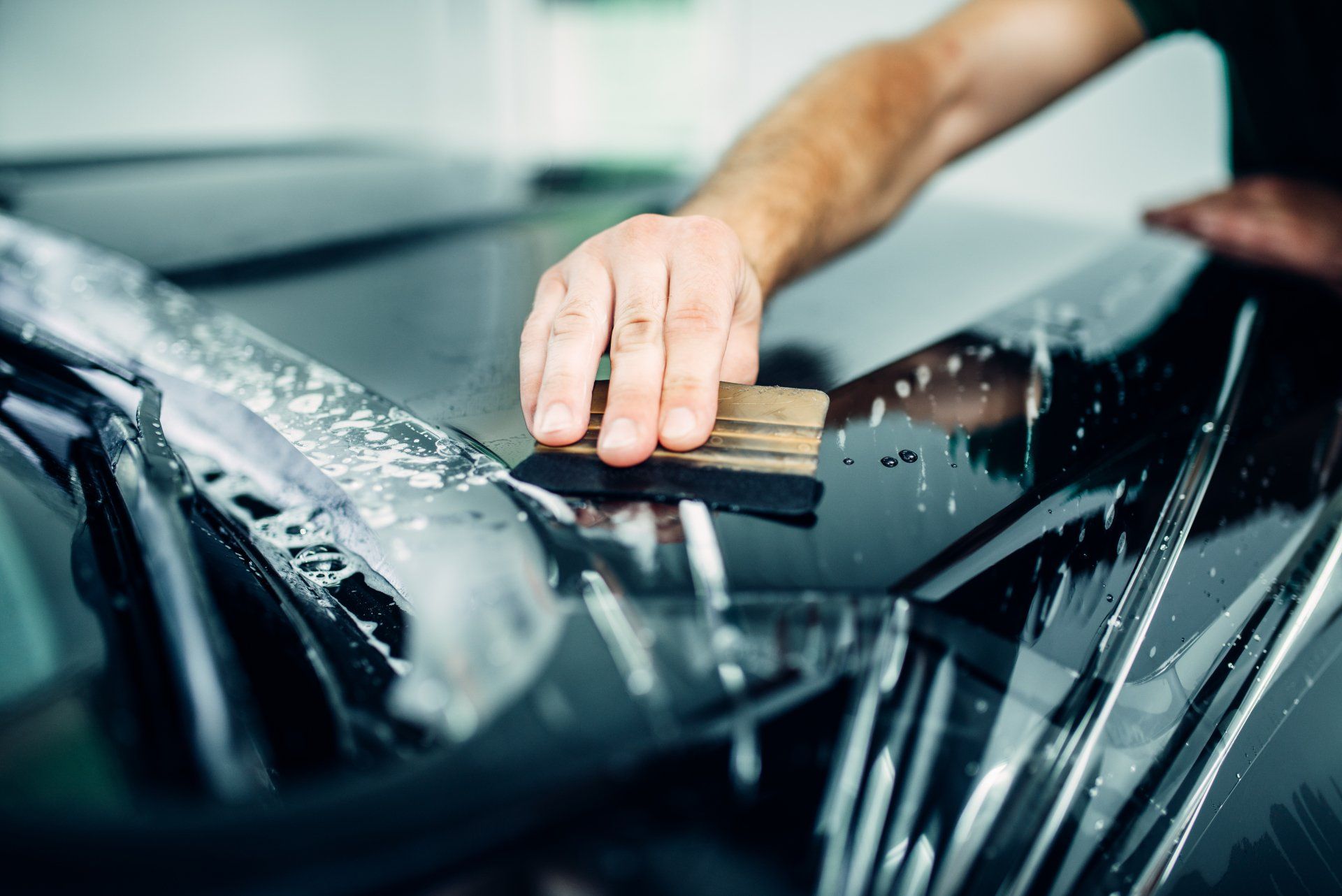Five Myths About Ceramic Coating Explained
Five Myths About Ceramic Coating Explained
Blog Article
Ceramic Finishing vs. Traditional Wax: Which Uses Better Protection?
The debate between ceramic finish and traditional wax for vehicle protection is one that values cautious evaluation, specifically in regards to toughness, resistance to environmental elements, and general maintenance needs. While ceramic coatings guarantee extended long life and exceptional defense against a variety of dangers, traditional wax might attract those seeking a more budget-friendly, albeit short-term, option. As we check out the subtleties of each alternative, the implications of your choice might have enduring results on your car's look and upkeep regimen. What factors should affect your decision?
Summary of Ceramic Layer
Ceramic covering has actually acquired significant popularity amongst auto lovers and professionals alike for its innovative protective high qualities. This ingenious remedy includes a liquid polymer that chemically bonds to the automobile's manufacturing facility paint, forming a sturdy layer of defense. Unlike typical wax, which normally lasts for a few weeks to months, ceramic finishes can supply durable defense for a number of years, depending upon the product made use of and application approach.

While the first cost of ceramic layer may be greater than that of traditional wax, the long-term advantages, consisting of durability and lowered maintenance regularity, usually warrant the investment. As vehicle technology remains to develop, ceramic layers have actually arised as a favored option for those looking for ideal defense and durability for their lorries.
Summary of Typical Wax
The attraction of typical wax lies in its simplicity and convenience of use, making it a preferred selection among automobile owners seeking to boost their automobile's appearance and supply a basic degree of security. Usually originated from all-natural carnauba or artificial polymers, conventional wax creates a thin protective layer over the paintwork. The application process is uncomplicated, often entailing a straightforward rubbing with a microfiber towel, making it available to both amateur and experienced customers.
Traditional wax products are available in numerous formulations, each made to deal with particular requirements, such as boosting sparkle or supplying water beading. The flexibility of wax enables use on various surfaces, including paint, glass, and even plastic trim. While the application can be done by hand or maker, the secret is to guarantee a clean surface for optimum attachment.
However, one remarkable quality of standard wax is its relatively short lifespan compared to modern choices. Commonly providing security that lasts from a few weeks to a few months, constant reapplication is required to keep its performance. In spite of these restrictions, conventional wax remains a preferred selection for auto enthusiasts who value the aesthetic improvement it provides.
Trick Security Attributes
When considering paint defense for vehicles, it's necessary to understand the crucial attributes that distinguish conventional wax from even more advanced choices like ceramic coatings. Among the primary safety features of ceramic finishings is their sturdiness. Unlike wax, which typically lasts a couple of weeks, ceramic finishes can sustain for a number of years, giving long-term defense against environmental pollutants.
Ceramic finishings develop a hydrophobic surface area, driving away water and protecting against dust, grime, and various other debris from sticking to the paint. This function not only enhances the automobile's appearance yet also lowers the frequency of cleaning. Additionally, ceramic coverings offer remarkable UV defense, protecting the paint from unsafe sunlight direct exposure that can result in fading and oxidation.
In contrast, standard wax provides an extra short-term obstacle versus aspects however lacks the resistance to scrapes and chemical spots that ceramic coverings offer. While wax can improve gloss, its safety capacities are limited, particularly versus harsher environmental elements such as bird droppings, tree sap, and roadway salt. In recap, the key discover this defense functions of ceramic coverings try here dramatically outperform those of conventional wax, making them a superior choice for long-lasting car treatment.
Application Process Comparison

In contrast, the application of ceramic coatings is extra complicated and time-sensitive, frequently calling for specialist aid for optimal results. The car's surface should be carefully cleansed, decontaminated, and polished to remove imperfections prior to the finish is used.
Eventually, the selection in between wax and ceramic layer pivots not just on defense degrees however also on the time, proficiency, and sources available for their corresponding applications. - ceramic coating
Price Analysis and Long Life
Cost plays a substantial role in the decision-making process in between ceramic finishes and conventional waxes. Ceramic layers typically regulate a greater ahead of time investment, varying from $500 to $2,000 depending upon the quality, brand name, and specialist application services. This initial price can be credited to the sophisticated modern technology and materials made use of in ceramic formulas, which provide premium durability and security.
On the other hand, traditional waxes are a lot more budget-friendly, usually setting you back in between $20 to $100 for do it yourself applications. The durability of wax products is restricted, commonly requiring reapplication every few months to maintain their protective top qualities. This reoccuring cost can collect over time, making wax less affordable in the lengthy run.
Ceramic finishes, while much more expensive at first, deliver lasting results, often going beyond two to five years with correct maintenance. This long life can offer substantial financial savings gradually, specifically for car owners who prioritize protection and aesthetic preservation - ceramic coating. Inevitably, the option in between ceramic finishings and standard waxes should think about both first expenses and lasting worth, factoring in the maintenance needs and preferred security degree for the vehicle
Final Thought
In summary, ceramic layers offer premium security for lorry paint contrasted to typical wax, offering boosted toughness, resistance to environmental factors, and hydrophobic homes. While the preliminary investment for ceramic coverings is higher, their longevity and decreased upkeep click for source needs validate the cost. Ultimately, for those looking for lasting automotive treatment and defense, ceramic coverings represent a much more effective remedy than traditional wax, which uses only short-term advantages.
The debate in between ceramic finish and conventional wax for automobile security is one that values cautious assessment, especially in terms of durability, resistance to environmental variables, and general maintenance requirements.When thinking about paint protection for lorries, it's necessary to recognize the essential features that differentiate typical wax from even more innovative alternatives like ceramic coatings. In summary, the crucial protection features of ceramic layers significantly beat those of standard wax, making them a premium selection for durable lorry treatment.
Eventually, the selection between standard waxes and ceramic coatings ought to consider both initial expenses and lasting value, factoring in the maintenance demands and preferred security degree for the lorry.
In recap, ceramic coverings supply premium defense for automobile paint contrasted to traditional wax, offering boosted resilience, resistance to environmental aspects, and hydrophobic homes.
Report this page